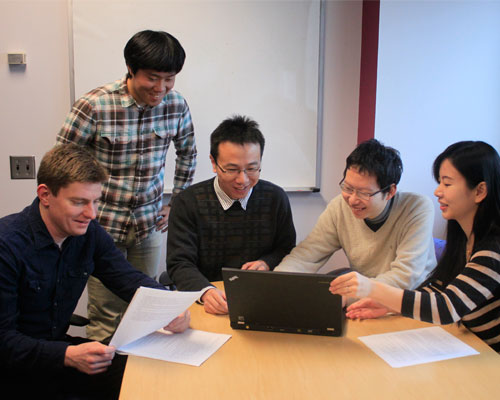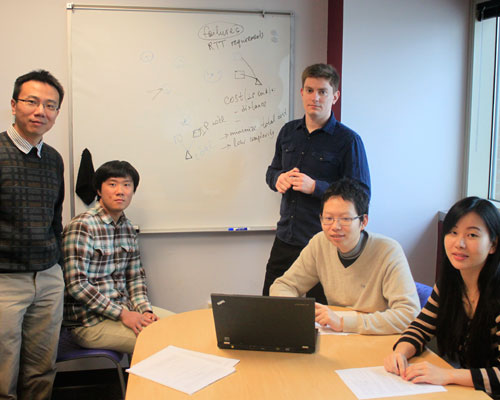Bringing our network to the cloud is not just a concept. We’re doing it. To meet our goal of virtualizing 75 percent of our network by 2020, we have to move quickly. One way we’re doing this is by tapping other minds and collaborators in the industry.
In May 2015, we put a call out to academia and research institutions to invite the brightest minds in the industry to participate in the first-ever AT&T SDN Network Design Challenge hosted by Labs. This was the first challenge of its kind.
We created this unique opportunity to nurture the next-generation of innovators in software-defined networking. The challenge empowered academia to innovate at scale and work with a realistic, carrier-grade network.
And the winner is …
We received responses from several academic collaborators in SDN and NFV. Their submissions answered the question: Which network routing method yields the best results, most efficiently and cost effectively?
After reviewing each submission, we’re naming Cornell University as the AT&T SDN Network Design Challenge winner. The Cornell team will be awarded $50,000 and a summer internship at AT&T Labs for up to two students.
The winning team was made up of six volunteers – a professor, postdoctoral scholar and four graduate students. Kevin Tang, associate professor of Electrical and Computer Engineering at Cornell, led the team and said they had never participated in such a thought-provoking competition.
“We would like to thank AT&T for taking the effort to define such a highly complex and interesting problem so well,” said Tang. “The opportunity to work with a realistic, carrier-grade network really excited us.”
The competition presented the team with a concrete problem and challenged them to use theory as a starting point that leads to practical design choices.
“Through the process, the most notable thing we learned was the value of fundamental theory and how to realize that value,” said Tang. “At the university, we tend to study things in more general and idealized settings.”
He shared that the most challenging part about the competition was balancing the quality and the efficiency of the solution, which was different from the usual exercises that only require solving for one or the other. “Since the trade-offs are hard to precisely quantify, they become more of an art than a science.”
“As the growth of data continues to snowball due to trends like the Internet of Things and mobile data, the demand for a fast, efficient and flexible network increases exponentially,” said Tang. “I believe that building software-centric networks based on breakthrough technologies, like the solution our team pioneered, satisfies this demand.”

What was the goal of this challenge?
Our goal for this challenge was to improve network routing, so your network has the flexibility to reinvent itself to fit your needs – whether it’s streaming video, sharing photos or playing a high-definition game.
As part of our network transformation, we are evaluating how to virtualize routing, using software on standard compute equipment.
What does the challenge mean for AT&T?
The objective is to find the most reliable, efficient way to control and send data across the network. But there are different ways to do it.
The AT&T SDN Network Design Challenge gave us a better understanding of how different strategies within a software-centric environment can be used to help improve routing and network utilization.
Why did AT&T do this?
Our strong culture at AT&T and within Labs encourages openness and collaboration. For example, we’re collaborating with the open source community to make this transformation a reality. We’ve found the collaborative approach helpful in our effort to make our services stronger. It helps us get to the network of the future, faster.
According to Dr. Gagan Choudhury, Lead Inventive Scientist in the AT&T Advanced Technology Platforms and Architecture organization, who organized the competition, “It was great working with top university teams. We were very impressed with the quality and innovation of the submissions.”

PR Archives: Latest, By Company, By Date